Common Pantry Pests and How to Deal With Them

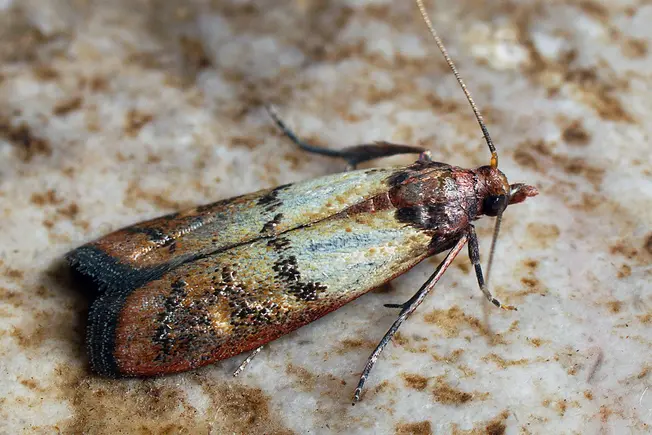
Indianmeal Moths
These coppery-winged insects may be the No. 1 invaders in your pantry. The adult moths don’t eat foodstuffs. But their larvae feast on cereal, flour, cornmeal, rice, nuts, dog food, and other dry goods. They spin silk webs that trap their poop, dead skin, and other gross stuff on food surfaces. Use tight-lidded containers to keep them out.
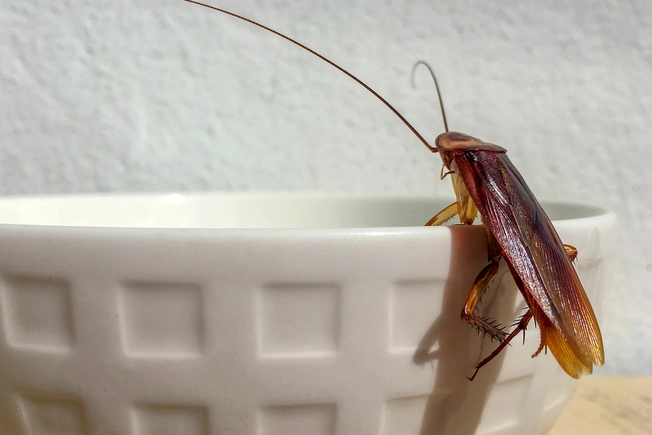
Cockroaches
These cousins of termites probably take the title for ickiest pantry pests. The ones you see scurrying when you flip on the light most likely are German cockroaches. They can be hard to stamp out. They can eat rotted food and trash and then contaminate your food and drinks. Their droppings also can set off an allergic reaction in some people. The best way to keep them away is to keep a clean and dry house and your garbage lidded. If you have an infestation, you may need to resort to an insecticide.
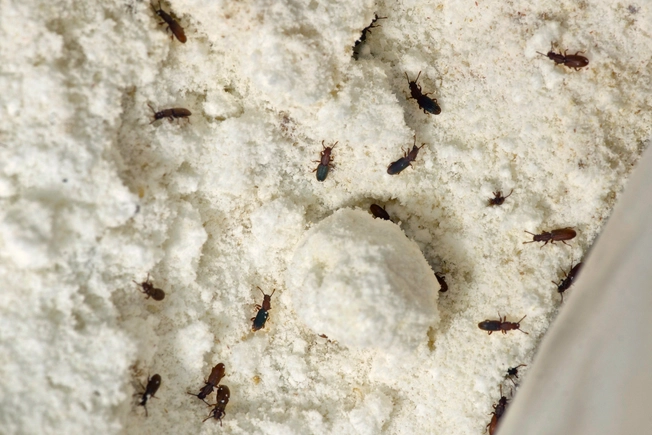
Sawtoothed Grain Beetles
These tiny, dark insects get their name from the teeth that stick out between their head and belly. They can infest your dried fruits, jerky, pasta, seeds, and many other staples. If you accidentally swallow them or their eggs, no need to panic. Sawtoothed grain beetles aren’t known to carry or spread harmful germs.
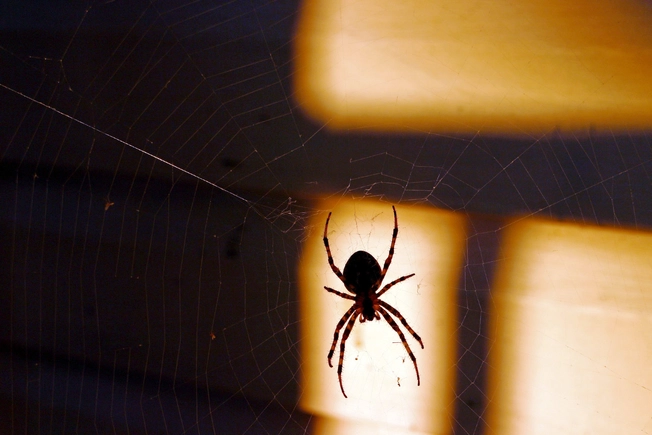
Spiders
These eight-legged arachnids love a dirty pantry. Spilled food and trash attract flies, moths, and other menu items for spiders. Spiders can climb in through cracks in your house or even hitch a ride from the grocery store. Vacuum up the webs and eliminate the insects that become meals for spiders.
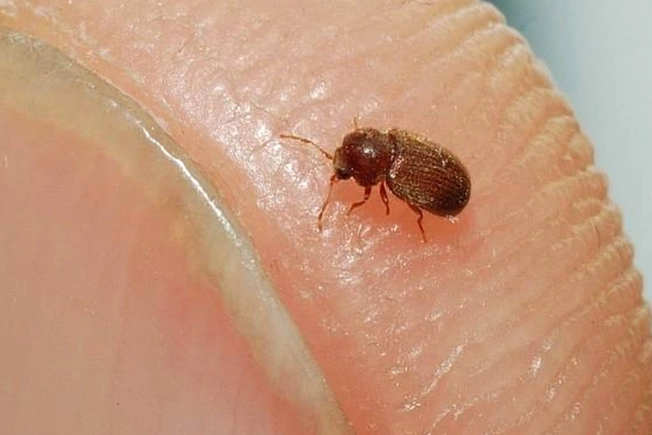
Drugstore Beetles
These brown flying insects are drawn to light. They feed on dried plant foods, including herbs, spices, macaroni, and even tobacco and books. You might see adults buzzing around or notice holes in packages that the beetles chewed through. They can go for weeks without food. Toss all infected foods and thoroughly clean your pantry so the bugs don’t come back out from hiding.
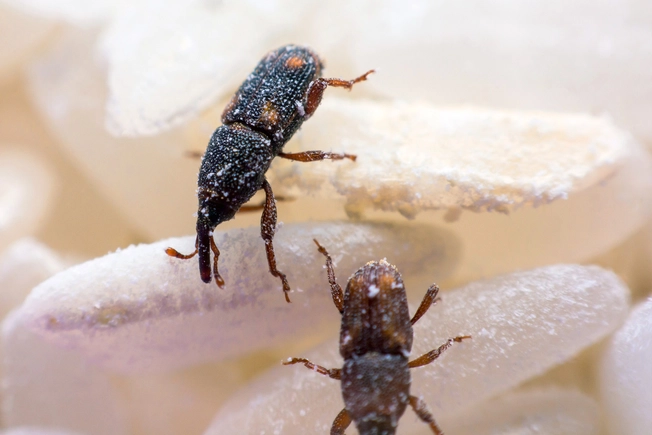
Rice Weevils
Weevils are a type of beetle that eats plants. These dark brown, winged insects can spoil entire bins of grains. Rice weevils attack more than just rice. They also feed on corn, wheat, cereal, nuts, and even apples and pears. At the grocery store, pay extra attention before you bag grains and other bulk items.
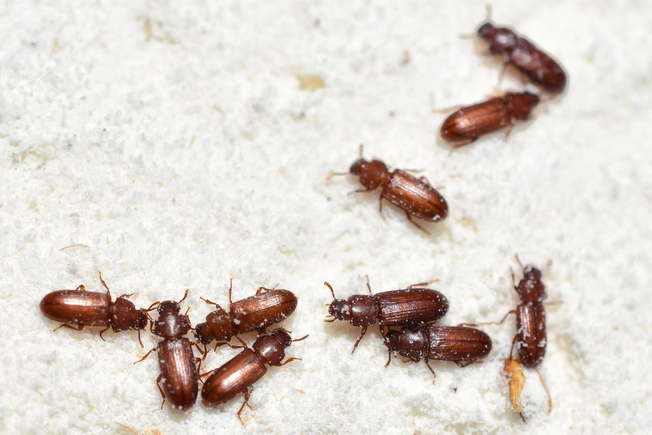
Flour Beetles
The two most common species are the red flour beetle and the confused flour beetle. They look similar, but you’re more likely to meet the red flour beetle in your home. The females lay sticky eggs on top of grains, shelled nuts, and other foods. These beetles can make infested food smell and turn moldy. Toss out all tainted foods and vacuum all debris.
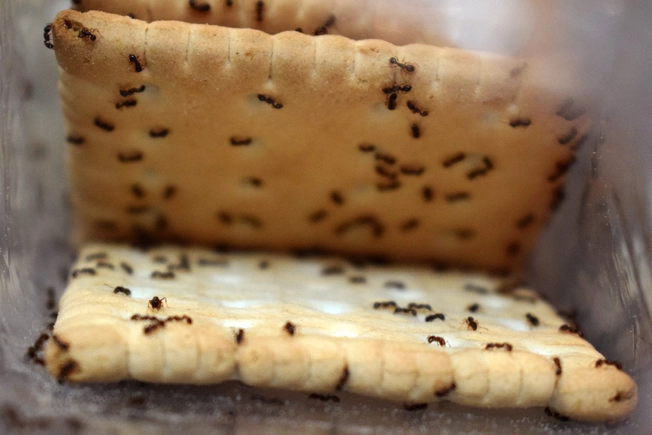
Ants
Pharaoh ants and crazy ants are known for their sweet tooth. Other species, such as rover ants, like meat and protein. Ants can crawl through electrical outlets or wall cracks to reach your kitchen. If you spot them roving your pantry in a single file, one way to banish them is with indoor ant baits. Be sure to sweep up crumbs and other potential food sources.
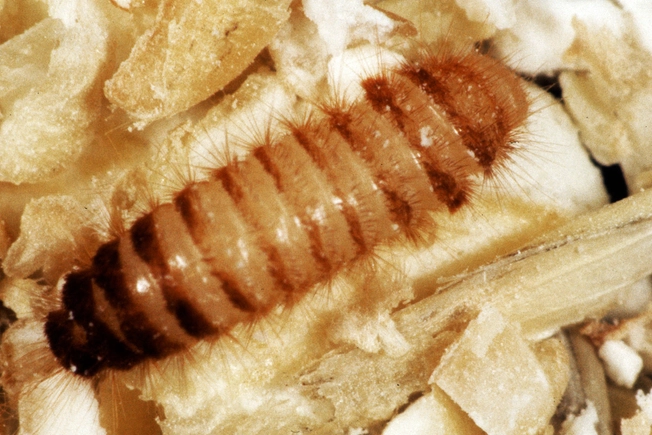
Warehouse Beetles
Females can lay almost 100 eggs. Those eggs mature into hungry larvae that feed on flour, cereal, pet food, candy, potato chips, and dead insects. The larvae shed their stiff hairs in the foods, which can set off an allergic reaction if you swallow them. Toss all infected food right away in sealed bags away from the house.
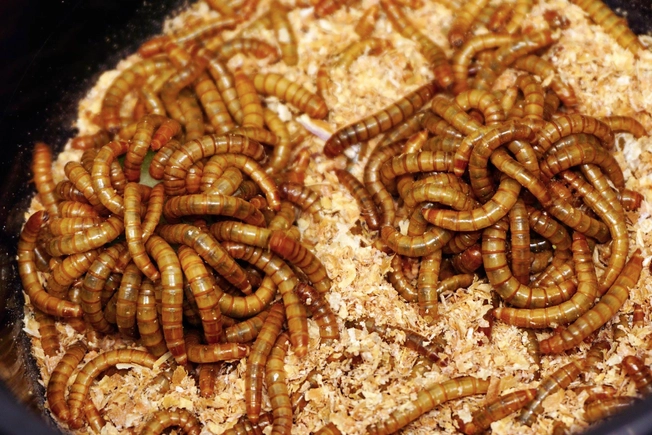
Mealworms
You’re most likely to find these yellow caterpillars in a forgotten box or bag of food in your pantry corner. Mealworms love damp, moldy foods, including flour, grains, and birdseed. Seal cracks and crevices in your walls, floors, and windows where the insects can enter and hide.

Pantry Buffet
Pantry pests are just that. They target your dried food but don’t bite or sting people. Adults or their larvae can infest almost anything in your cupboards and shelves, including:
- Cured meats
- Cookies, crackers, and pasta
- Beans, peas, and corn kernels
- Spices
- Powdered milk
- Tea
- Chocolate
- Seeds and nuts
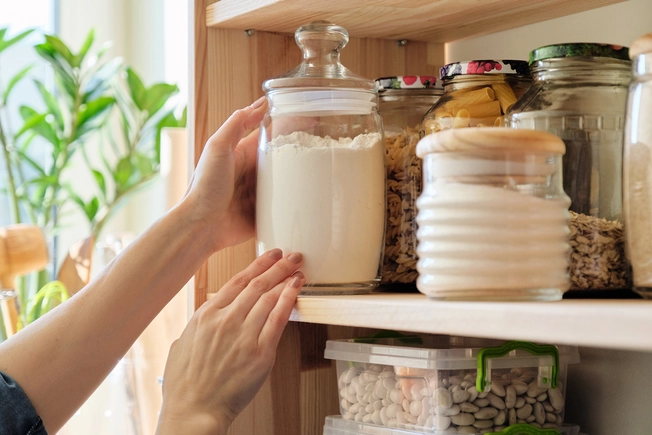
Storage Smarts
Some pantry pests can easily bore through waxed paper, plastic bags, and cardboard boxes. Move dried foods into sealed containers. Store foods like cornmeal and most nuts in the freezer where the bugs can’t get them. Powdered milk and dried fruits can be refrigerated. Bonus: Your foods will stay fresher longer. Wash containers before reusing.

How to Get Rid of Pests
First, throw out all infested foods in well-sealed bags. Then:
- Check if the insects have spread to other items, especially opened packages.
- Vacuum the pantry and wipe the walls and shelves with soap and water.
- If you need to salvage part of the tainted food, try leaving it in a 130 degree oven for 30 minutes or in the freezer for 4 days. (note that frezing will not kill bacteria)